How to know if a diamond is true or false?
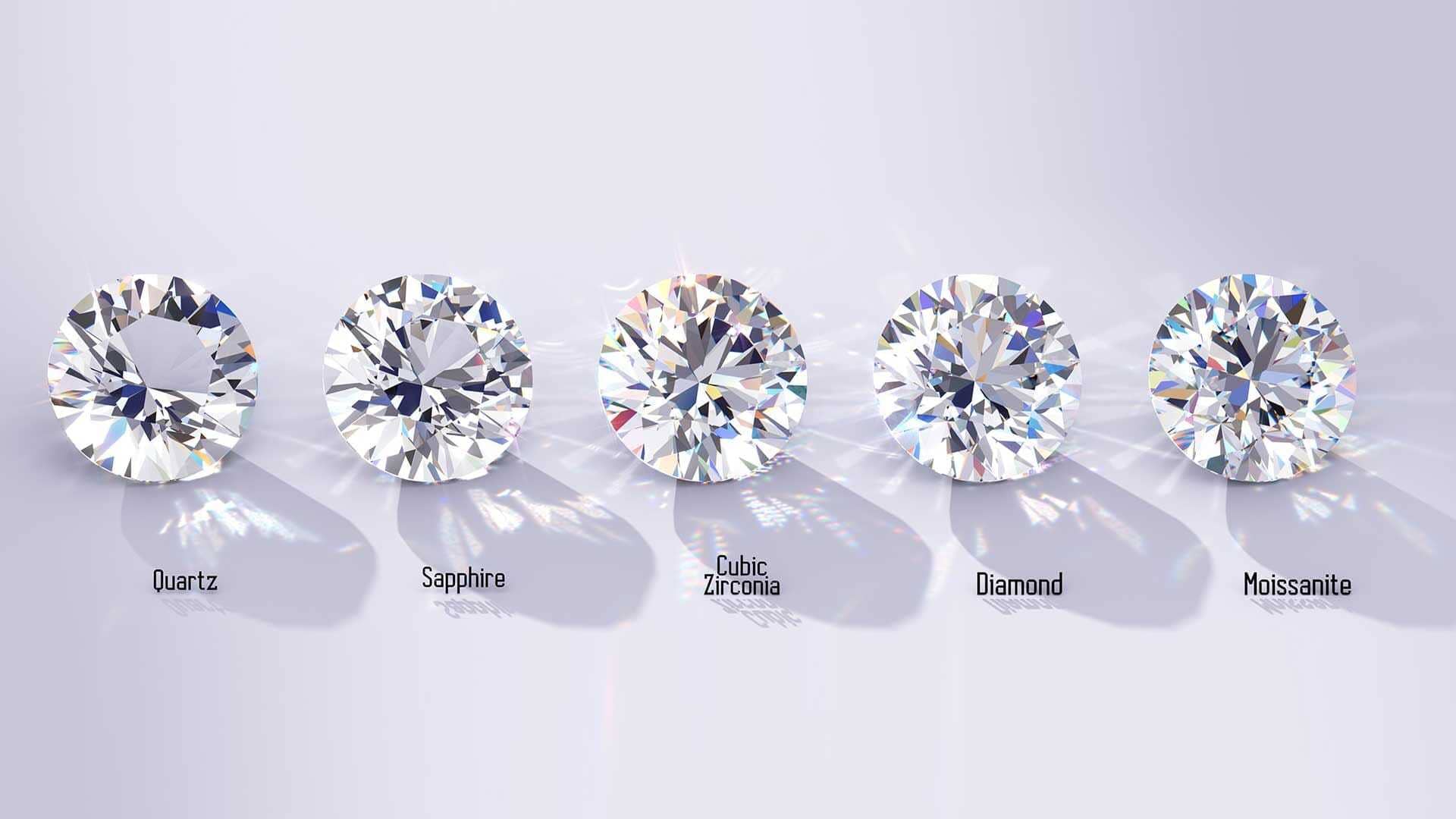
Diamonds are an extremely popular and valued material, but they are not well known and are often a source of concern for new buyers: how can you tell if a diamond is real or fake? Considering the price of a diamond, buying a fake at the price of the real one is very expensive! We have listed below the questions that we are most often asked, hoping to answer them as clearly as possible and giving you some techniques to help you distinguish the real from the fake without being a diamond dealer or a gemmologist expert in precious stones. For more information, do not hesitate to contact us directly by phone or e-mail.
What is the best guarantee that my diamond is real?

The best proof is the certificate of authenticity issued by one of the three most recognized gemological laboratories in the world: the GIA, the HRD and the IGI. These gemologists appraise the diamond and issue its identity card specifying all its quality characteristics as well as its authenticity.

This certificate certifies that the diamond is a real natural diamond. i-diamant only sells GIA, HRD and IGI certified diamonds. As soon as a diamond weighs more than 0,30 carat, its value justifies that you make it appraise by one of these 3 laboratories.
If you want to buy a diamond, from 0.30 carat, we strongly recommend you not to do it if it is not accompanied by one of these 3 certificates. With this guarantee, you can be completely reassured. Please note, however, that it is preferable to verify that the diamond number issued by the laboratory is laser-etched on the diamond's roundel to ensure that the stone and its certificate correspond.

Engagement ring
4 Claws Classic
Solitaire diamond with 4 claws, a classic and timeless style. The highlighting of the diamond…

Ring
BRILLIANT
The perfect gift for your ever lasting love. Hand made french jewellery. Gold 750/000. Delivered in…

Pendant & Necklace
4 CLAWS
4 claw diamond pendant without bail. Forçat chain fixed by 2 rings on each side of the…

Wedding Band
RUBAN
Classic diamond wedding ring. 18 carats gold. Made in France. Delivered in a jewellery box. See…

Earrings
4 CLAWS CRADLE
Handmade diamond earrings, 4 claws heart-shaped cradle setting. Elegant exclusive design by…
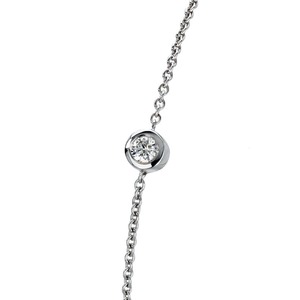
Bracelet
ETERNITY
Diamond bezel bracelet. Very popular, a style that is both classic and contemporary. 18 carats…

Engagement ring
5 Claws Classic
Solitaire diamond with 5 claws. Solitaire offered in 18k white, yellow or pink gold (750/000) or in…
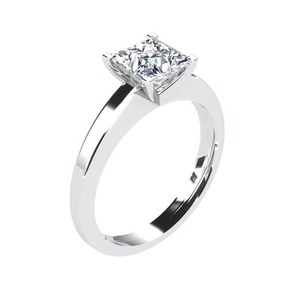
Ring
PRINCESS ROYAL
Style full of sparkle without being ostentatious. The dawn of passion and romance. Hand made to…

Pendant & Necklace
3 CLAWS B
Diamond pendant with 3 claws to enhance the stone as much as possible. Crimping carried out with…

Wedding Band
NOCEA
A modern style: diamonds are entwined in a crimped said "rail", a very contemporary…
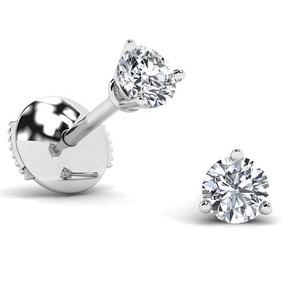
Earrings
3 CLAWS PREMIUM
Handmade earrings with diamond belt based on mid height of the claws which are based on a rabbet.…
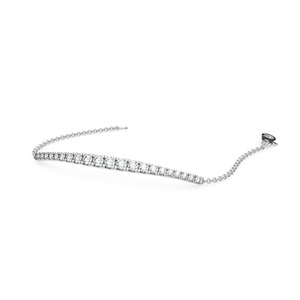
Bracelet
ERGO
Very modern, bright without being ostentatious. Pleasure of playing with the brilliance of…

What does a real rough diamond look like?
A rough diamond has generally an octahedral shape, similar to that of cubic zircon, but also to that of moissanite, or pyrite. Confusing them is thus frequent. A few checks are therefore necessary to know if a rough diamond is real or fake:
- Study the shape of the diamond which should be as follows: Octahedron with eight triangular faces with twelve edges and six vertices, or cube with six square faces with twelve edges and eight vertices, or dodecahedron with twelve pentagonal faces with thirty edges and twenty vertices, or rhombododecahedron with twelve diamond faces with twenty-four edges and fourteen vertices.
- Use a diamond tester.
- Measure the refractive index of the stone with an optical time reflectometer, which should be between 2.407 and 2.451.
- Try to read through the test stone. If you can do this, it means that your stone is not a rough diamond.
French jewellery
Our slogan
Passion, Authenticity, Expertise
Certified diamonds
By 3 world-renowned laboratories

What is zircon and fake diamond glass?
Diamond can easily be confused with imitations, zircon being a perfect example. A natural gem from the silicate group, its high hardness and resistance make it a highly prized stone in jewelry, jewelry and watchmaking in the category of fine stones, as opposed to precious stones such as diamond, sapphire, ruby and emerald. Similar in shape, with a high refractive index, zircon is also available in colors similar to those of diamonds: colorless, white, pink, green, brown, red, yellow, blue, pink ...
Fancy jewelry is often made of faux diamond glass, also called rhinestones, named after the jeweler of King Louis XV. It is a glass paste material with a high refractive index that takes on the appearance of colored diamonds after the addition of metallic oxides. Another famous inventor is the Austrian Swarovski who was able to create crystals so similar to diamonds that they are literally sold at a high price! But the big difference between zircon and diamond is brilliance and rarity, with diamonds being much shinier, harder and rarer than zircon.
What is zircon worth?
At 80 to 100 euros per carat, zircon is an affordable imitation. This stone is however fragile, which is why it is often mounted in a closed setting. The deposits are mainly located in Asia, but they are also found in France, in the Haute-Loire department.
Is a striped diamond a diamond?
How to know if a diamond is real or fake ? By examining it from every angle. The hardness of a material is its ability to resist scratching. It is measured using the Mohs scale which has 10 degrees, from 1 to 10, from the softest to the hardest. The test consists of rubbing points of different hardness on a facet of the gem, until one of them ends up scratching it. The result of the test: the diamond has a hardness of 10! In other words, if with a magnifying glass or microscope you see scratches or sharp, rounded edges on your diamond, it is not a real diamond.
Diamond: a stone that scratches glass
One more tip to help you determine the authenticity of your gemstone: use its pointed side to try to scratch glass. If you can do this, it means you've damaged your glass, but consolation, you're on the right track, your diamond is most likely genuine. To double check, try to read through the stone. If you can do this, it means that your stone is not a diamond.
Our selection
of diamonds
De Hantsetters, diamonteers since 1888
Can a diamond break?
We have already mentioned above the exceptional hardness of diamonds, which makes them the most resistant of all minerals. But hardness does not necessarily mean solidity, because this magnificent gemstone can break. Like a wooden log that can be easily split lengthwise but not lengthwise, depending on the cleavage plane, the lapidary will know at what angle to cut the diamond without it breaking.
What is the difference between a diamond and a brilliant?
The terms "brilliant" and "diamond" are often mistakenly equated in common language. In fact, diamond refers to a precious stone, while brilliant, which is the abbreviation of "brilliant cut", is a way of cutting the diamond to enhance its brilliance. This is why it is the most popular diamond shape to wear in an engagement ring: the so-called "round brilliant cut" diamond.
Is a real diamond white or are there also colored diamonds?

Diamonds are not necessarily white. Colored diamonds do exist but they are very rare, finding one is a real miracle and owning one is a great opportunity and joy. There are multiple colors for a diamond: yellow, orange, green, blue, purple, pink, black, brown and, more rarely, red. More than 300 colors of diamonds have been listed with various shades for each. These are rare stones (about 1/10,000) that take on these hues as a result of specific geological phenomena, resulting from a process of mixing chemical elements and deformation of the crystal. Colored diamonds are the most expensive because of their rarity. The more intense their color, the more expensive they will be, with prices reaching several hundred thousand dollars for stones of one carat or even less! They are classified by color grade according to the following standard that takes into consideration various factors such as hue and saturation:
Pale (Faint)
Very light (Very light)
Light (Light)
Fancy light
Fancy (Fancy)
Fancy intense
Fancy vivid
Fancy dark
Fancy deep
For a colored diamond, demand that it be accompanied by a GIA, HRD or IGI quality certificate that attests to its natural origin and color.

Exceptional quality of stone and jewel

Customer service at your service, provided by diamond dealers

Sealed diamonds with a certificate of quality and authenticity

French manufacturing

30-Day « satisfied or reimbursed »
guarantee

Online secured payment
De Hantsetters, diamonteers since 1888
Customer service at your service, provided by diamond dealers
All our diamonds are independently certified by 3 world-renowed organisations



Want to talk to a diamonteer ?
Contact us now